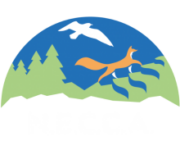Οrganizers:
Marija Bošnjak (Croatian Natural History Museum, Zagreb, Croatia)
Celia Bueno (Natural History Museum of Neuchâtel, Neuchâtel, Switzerland)
Océane Lapauze (Naturhistorisches Museum Basel, Basel, Switzerland)
Janine Mazenauer (Naturhistorisches Museum Basel, Basel, Switzerland)
Danae Thivaiou (Naturhistorisches Museum Basel, Basel, Switzerland)
Mollusc specimens constitute important parts of natural history collections, whether they are modern or fossils. They are at the heart of scientific works, shaping current and future research design. From the moment of collection in the field to long-term storing, the specimens go through important steps that ensure their perennity in the housing Institution. Special attention is on the type specimens storage. This session includes three main topics: preparation, curation and management of the molluscs in museum collections.
Preparation always constitutes a key step for mollusc collections. Thematics related to specimen preparation, long-term storage, monitoring, restoration following the principles reversibility-neutrality-stability are some of the most important points of conserving specimens. Every collection has its own issues, which the preparation process addresses.
Curation ensures the persistence of specimens and associated information, because each collection has its own important data. A large part of them is not yet known; this is also known as “dark data”: the unknown collection material highlights the importance of management and the transmission of the data to future generations. Other challenges include frequent relocations of the collections to new buildings or in depot facilities. Digitization has become an important part of collection management, with museums using different software or databases.
This special session envisages stimulating dialogs relative to the conservation and storage of molluscs in natural history collections, management of type collections, exchange of best practices, communication with the public, promoting scientific collections through popularization activities, ensuring the availability of specimens to future generations of scientists.



